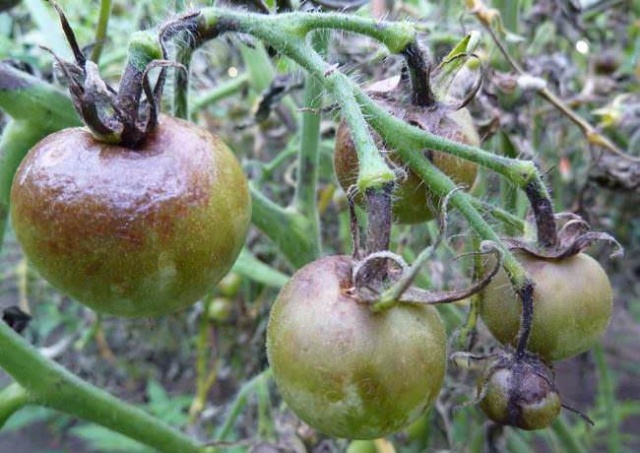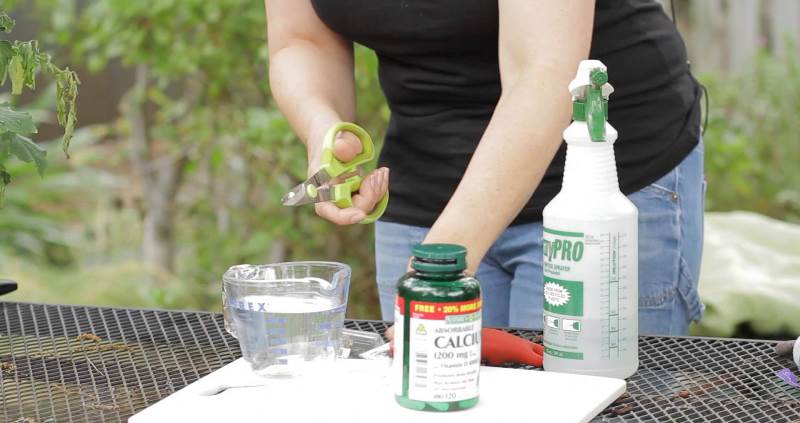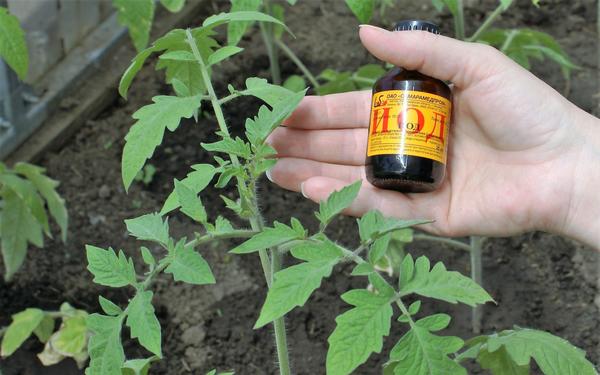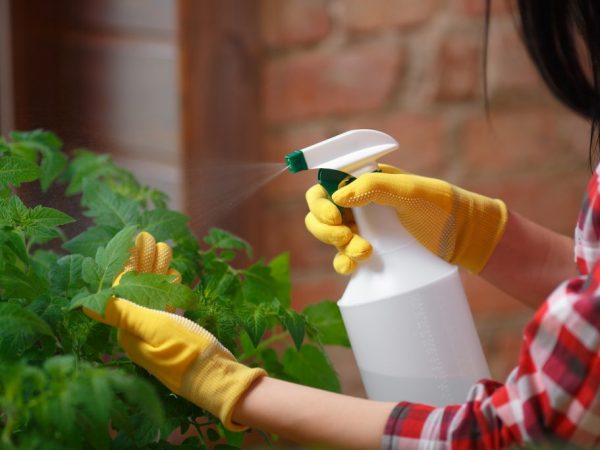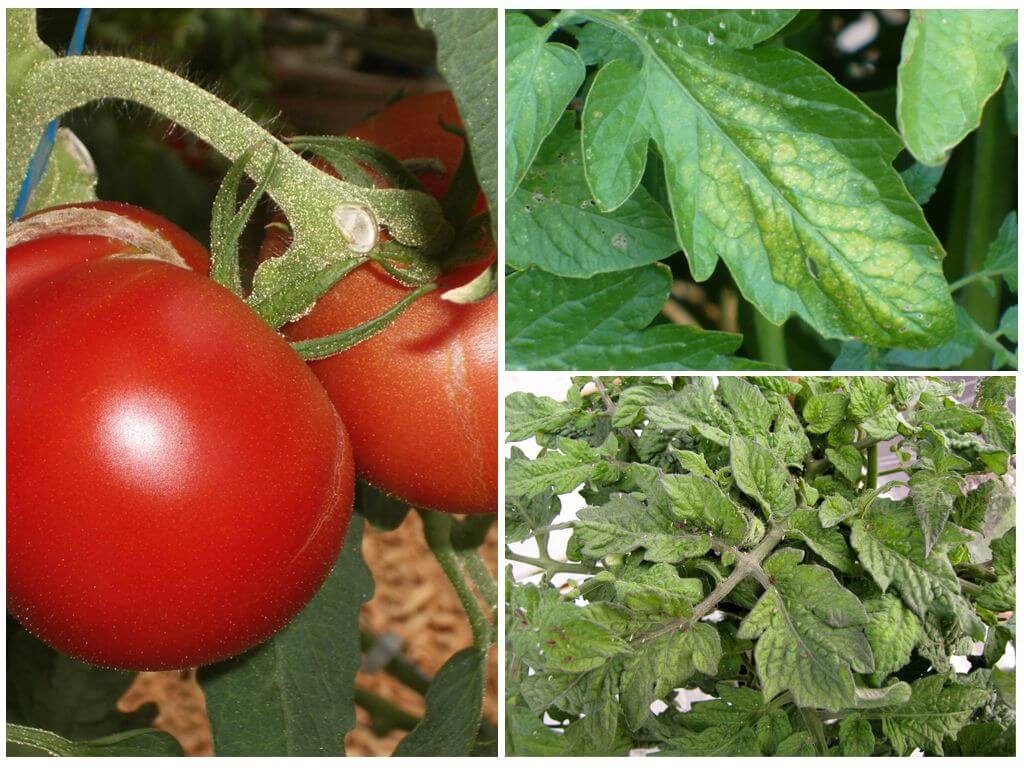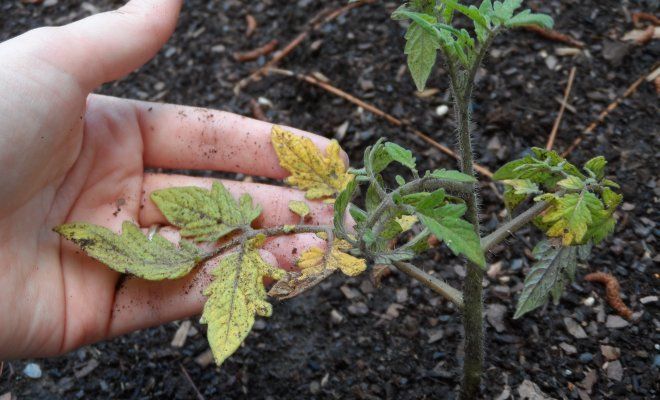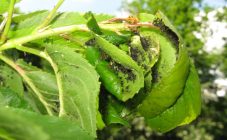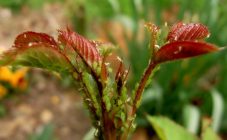Content:
It is at the time when tomatoes begin to ripen that they most often undergo a serious disease. How to prevent such a terrible fungal invasion as late blight on tomatoes in a greenhouse, how to deal with it in order to save the harvest, because the plant can die in this case in 2-3 days?
Phytophthora on tomatoes - what is it?
The external manifestations of phytophthora are bright, they are easy to find on the leaves, stems and the fruits themselves. Dark brown spots of various shapes and sizes - this is the result of fungal infection, leading to the rapid death of the entire plant.
Spores that enter the greenhouse quickly begin to spread throughout the space.
But how do these insidious fungi get into the greenhouse? Phytophthora spores are known to tolerate winters well in potato tubers. In spring, with sprouted shoots, they spread over the soil, and are carried by the wind to all accessible places, including the greenhouse.
They can also get into the ground if it is taken from places where nightshade crops affected by late blight grew. In addition, late blight is well preserved on untreated tomato seeds and germinates with them after sowing them in greenhouses.
The spores of the fungus persist in the soil throughout the winter, when the necessary preventive treatment of the entire greenhouse was not performed after the autumn harvest.
Methods of dealing with late blight on tomatoes. When and how to process tomatoes
In the fight against late blight, the main role should be given to prevention. It should be borne in mind that a favorable environment for the spread of the disease is:
- high humidity (more than 70%);
- thickening of the planting;
- lack of ventilation of the greenhouse;
- improper (excessive) watering;
- lack of disinfection of the greenhouse and soil in it after the autumn harvest;
- weakened tomato bushes;
- untreated seed.
Since the spores of the fungus are quite tenacious, preventive measures to combat them must be carried out regularly and comprehensively. This means:
- Perform autumn work in the greenhouse (cleaning from old plants, destroying them, disinfecting walls, disinfecting soil). Modern greenhouses are often made of transparent cellular polycarbonate with a UV coating, which is convenient to disinfect from the inside.
- To do spring processing of the greenhouse and soil (by fumigation, biological products or chemicals).
- Periodically treat the tomato plants themselves with various drugs against late blight (biological, chemical, medicinal or folk remedies).
- Ventilate the greenhouse room, thereby reducing the humidity inside it.
- Plant seedlings, observing the necessary distances between the bushes to ensure good air access to them.
- Do not thicken the plants themselves, forming them correctly, carrying out pinching on time.
- During the formation and ripening of fruits, feed the tomatoes in a timely manner to maintain their immune system and increase resistance to diseases.
Folk remedies
How to process tomatoes from phytophthora in a greenhouse and which of the methods to give preference to - each gardener decides on the spot independently.It is possible to protect bushes from fungus by four means: chemical, biological, medical and folk.
In order not to addictive spores of the fungus to the means used, it is good to alternate the methods of processing the tomato. Often, gardeners prefer folk remedies because of their availability, safety (you can use it for fruiting) and simplicity (the constituent components are always at hand).
Among the many methods of combating late blight that have been tested in practice, the following stand out:
- Spraying with herbal infusion, which not only fights disease, but is also a good natural fertilizer. To do this, fill a plastic container with ⅓ green tops of any weed clean from seeds, add a bucket of manure and a bucket of earth and fill it with water.
- Processing with coniferous broth. 0.5 liters of water is poured into a container and a liter jar of needles (any) is poured, boiled for 5 minutes. After cooling, the solution is filtered, 20 g of laundry soap is added and diluted with water ⅕.
- Yeast solution. 20 g yeast and 10 tbsp. tablespoons of sugar are diluted with 3 liters of water, insisted for 8-10 hours. Water is added up to 10 liters and the tomato is sprayed.
- Processing tomatoes with an ash solution. 0.5 kg of wood ash is boiled in 3 liters of water for half an hour. Then add 7 liters of water, dissolve 20 g of laundry soap - the solution is ready.
- Saline solution, which creates a protective film on the surface of the plant and does not allow the further spread of phytophthora to healthy tomatoes. The solution is prepared 10% (100 g salt / 10 l of water).
Separately, from the folk remedies, it is worth highlighting the compositions in which the processing of tomatoes from late blight in the greenhouse is carried out using iodine.
Iodine as prevention against late blight
Iodine acts not only as an antiseptic for tomatoes, it participates in many physiological processes of the plant:
- photosynthesis;
- breathing;
- synthesis of amino acids;
- protein synthesis;
- nitrogen exchange.
When tomatoes lack iodine, they are less resistant to disease and are more likely to suffer late blight. Therefore, using it as a prophylactic agent against phytophthora fungus spores gives excellent results. In addition, it is good to use it as a top dressing for plant health.
The first feeding of tomatoes with iodine is recommended at the seedling stage. A single root watering is enough. The solution is prepared simply: a drop of iodine is dissolved in 3 liters of water.
The first processing of tomatoes in a greenhouse for late blight is performed 20 days after the emergence of sprouts. Cooking technology: a liter of milk and 15 drops of iodine are poured into 10 liters of water, mixed thoroughly. Spraying is repeated up to 3 times, with a break between them for 2 weeks.
It is useful to add iodine to other formulations for spraying against late blight:
- Garlic infusion. During the day, 100 g of garlic or green arrows of garlic are insisted in 0.5 l of water. Then add 20 drops of iodine and 20 g of soap, bring the volume to 10 liters (with water). Tomatoes are sprayed with the solution to prevent late blight every 7 days.
- Milk infusion. In 10 liters of water mix 2 liters of milk or whey, a glass of sugar, 20 drops of iodine, insist 3 hours and spray the plants.
- Kefir mixture. For 10 liters of water - 0.8 liters of kefir and 20-25 drops (1 tsp) of iodine, mix well and immediately process the tomatoes.
Useful tips and advice for gardeners.
After folk remedies, the next on the safety of the use of drugs for late blight on tomatoes are medication: Furacilin, Trichopolum or its substitute Metronidazole. These medicines can be used during the flowering period without fear.
Compositions are easy to prepare with them - dissolve tablets in water (for example, Metronidazole: 1 tablet per liter of water) and spray immediately. Medicines are used every 7 days and they work against fungi, bacteria, and also disinfect the soil well.
Biological preparations are allowed to be used at different stages of tomato growth every 10 days. The bacteria contained in them are aimed at destroying the spores of phytophthora fungi. These are Fitosporin, Planriz, Baktofit and others.
When all the means have been used and they do not help, or the disease is neglected, they switch to chemical preparations: copper sulfate, Bordeaux liquid, Hom and others. It is important to remember that tomatoes are sprayed with such fungicides before flowering and no later than 3 weeks before harvest.
July is the period of active fruiting of the tomato, during which the plants give all their strength to ripen the seeds. It is at such a moment that they are weakened and can quickly turn black from late blight. So it is worth feeding the tomatoes, inspecting the bushes more often and conducting the necessary spraying to protect them from disease.
